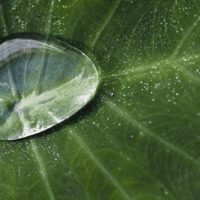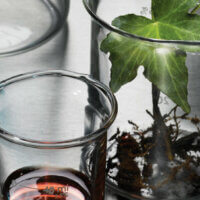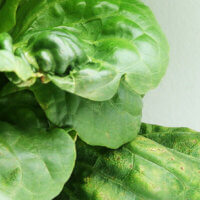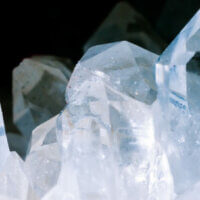-

How to acclimatize (harden off) rooted plant cuttings in 7 days
REDUCE HUMIDITYA) Humidity dome with vent: Open vent for 2 days then remove dome on 3rd day.B) Humidity dome with...
A liquid extracted from the principal component (humate) of the organic constituents of soil, humus, peat, etc. which is produced by biodegradation of dead organic matter.
Humidity is the measure of the volume of water in the air at a given temperature. Higher humidity (>75%) can lead to slowed growth due to reduced evapotranspiration and can increase the potential for disease that favors high moisture, such as powdery mildew. A circulation fan in the growing room and frequent air exchanges can reduce the amount of humidity in the air which will maintain an ideal environment for plant growth. Low levels of humidity (<20%) can also reduce growth by reducing the amount of moisture around the leaves of the plant which creates a situation of water stress in the plant. Using evaporative cooling or adding a humidifier to your growing environment can increase the level of humidity in the air and maximize the plant’s osmotic potential.
Soilless media that has been biologically enhanced using an array of organic inputs.
A device that measures relative humidity.
Indole-3-Butyric Acid is an auxin or plant hormone used to initiate root development. Thought to be synthetic, it can also be derived from natural substances.
A solution or medium that is chemically non-reactive.
The dissolving or washing out of soluble salts from a grow medium or soil.
Malformation of a leaf due to under- or over-fertilization, over-watering or damage caused by insects or disease.
A naturally-occurring mined mineral complex which will raise pH.
A chemically-sensitive paper that can be used to determine pH.
A unit of measurement of light that is used to rate the amount of output based on electrical wattage and other factors.
Classification for the major nutrients required for plant growth: Nitrogen (N), Phosphorus (P), and Potassium (K). Some systems include the secondary nutrients as macronutrients: Calcium (Ca), Magnesium (Mg) and Sulfur (S).
Classification for the minor nutrients required for plant growth, also known as trace elements: Iron (Fe), Boron (B), Copper (Cu), Molybdenum (Mb), Zinc (Zn), Manganese (Mn), Nickel (Ni), Cobalt (Co). Chlorine (Cl) and Sodium (Na) are sometimes included in this classification.
-

Mixing Nutrients – A Beginner’s Guide
* Keep in mind that some supplements will add to your total EC/PPMs, check the labels for their NPKs, or...
A device that measures the amount of moisture in a grow medium or soil.
Colonies of beneficial fungi which live on plant roots in a symbiotic association where fungireceive carbohydrates while plant roots receive enhanced mineral absorption capability.
0.000000001 of a meter. Used as a scale to measure wavelength in the electromagnetic spectrum, which includes visible light.
In this method of hydroponics, a thin film of nutrient solution is constantly flowing across the plant roots in a tray or trough. Like aeroponics, this system utilizes very little to zero growing media for plant roots to colonize which in the event of pump failure gives very little time before roots dry out and can lead to loss of crop. The advantage of a NFT system is the high level of oxygen in the root zone and the relative simplicity of the components using for fertigation. This system is most popular for growing leafy greens and herbs at the commercial production level.
-

NPK: A simple guide
When it comes to indoor and outdoor gardening, it is important to understand the significance of the N-P-K ratio. You...
A mineral that a plant can uptake and assimilate into its tissue; a plant food.
Leaf scorch that occurs from over-fertilization or application of excess salts, like nitrogen.
Carbon-based material, or a substance found in nature which is not processed.
used in gardening as a soil additive, peat moss is harvested from arctic bogs which take centuries to form.
A difficult aspect of growing plants is how to deal with harmful insects and diseases. Pest problems can be dealt with by using clean plant stock, minimization of exposure to outside environments and monitoring consistently. If insects do make it into your environment, using beneficial insects to combat the harmful ones or spraying with a variety of products that are targeted is the last resort. Preventing disease is not always possible, but using clean plant stock, keeping the environment clean, and preventing environmental conditions that favor the disease are the best steps to take.
A measure of the molecular concentration of hydrogen ions in a solution in a scale ranging from 1-14 with neutral being 7. Keep in mind that the pH scale is algorithmic-a reading of 6 is 10 times more alkaline than a reading of 5-so make changes very slowly. From 5.5-6.2 is considered an ideal range for hydroponics, depending on the grow medium or hydro method being used.
An electronic device that measures pH.
The amount of light received by plants during a 24-hour period.
The conversion of light energy to chemical energy (carbohydrates) by plants, which usually occurs in their leaves.
-

Plant Stress Signs and Preventatives
Most growers know to keep an eye out for common plant stressors like insects, diseases, and water and nutrient levels....
Growing plants by germinating their seeds or rooting cuttings from them.
Altering a plant into a desired form by cutting its leaves, stems, shoots, flowers or fruits.
A hydro system which circulates or “feeds” nutrient solution from a reservoir over and over again, until the reservoir is either “topped off” with additional nutrients or drained out completely and replenished. Ebb & flow (flood & drain) is the most common recirculating system in hydro, although NFT (nutrient film technique) and drip systems can also recirculate nutrient solution.
The exchange of gases by living organisms to support life; in the case of plants, consuming carbon dioxide and expelling oxygen as waste.
The area directly surrounding the roots of a plant.
A grow medium made from molten rock or inert material “spun” at high temperatures into a fibrous mass.
When a plant’s roots have grown to reach the limits of its container. Some plants prefer this, most should be transplanted.
Characterized by an accumulation of white, off-white or brown sediment on the surface of a grow medium or soil, and sometimes at the base of drainage holes on potted plants. Salt buildup reduces the amount of water molecules available for plant uptake.
A colloquial term meaning plant nutrients. A salt is actually an ionic compound with a cation from a base and an anion from an acid. Too many salts in a grow medium can cause plants to burn.
-

Silica
Silica supplements are a popular addition to nutrient regimens, making plants stronger and less susceptible to environmental and pathogenic damage....



